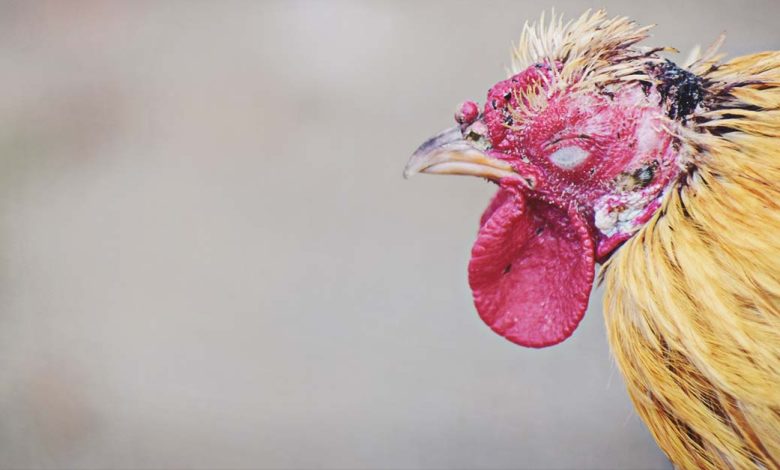MAREKS DISEASE

Dr. Dhruba Das, Dr. Parth Gaur
Assistant Professor, RPS Veterinary College, Mahendergarh, Haryana
Introduction-
Marek’s disease (MD) is a lympho proliferative viral disease of poultry. It is characterized by marked enlargement of the nerves, or marked enlargement of the liver, spleen, and kidneys due to diffuse growth of certain cells. It is an economically important disease. Although Marek’s disease has been effectively controlled by vaccine, sporadic and sometimes serious losses still continue to occur from it. The disease therefore needs adequate attention. Marek’s disease appears almost exclusively confined to female birds. The disease usually in growers when they approach sexual maturity, that is, between 17-20 weeks of age. The disease may then continue to inflict mortality even up to 40 weeks (a grower-to-layer disease).
Etiology –
A virus – called herpesvirus. The virus is of three different types: (I) mildly harmful, (2) harmful, and (3) very harmful.
Spread
Marek’s disease is highly contagious and readily transmitted among chickens
- The virus spreads rapidly from infected to uninfected birds. Cells from the feather follicles are the most important source of infection. The virus is present in a free form in cells shed from the feather follicles.
- Marek’s disease is highly contagious. Virus spreads through the air. Inhalation through the respiratory tract is the most important route of infection
- Once contracted, the infection persists throughout the life of the chicken, and infected birds continue to contaminate the environment by shedding the virus. Continued shedding of the virus by infected birds and hardiness of the virus are responsible for prevalence of the infection. The virus survives for months outside the birds
Symptoms
Marek’s disease affects chickens from about 6 weeks of age. It occurs usually between 12 and 24 weeks of age, but older birds may also be affected. Clinical disease occurs mainly in two forms: (1) Classical Marek’s disease, and (2) Acute Marek’s disease.
Classical Marek’s Disease
Marek in 1907 reported in this form. The symptoms depend on which nerve is affected. Involvement of brachial and sciatic nerves is common, and leads to paralysis of the wings and legs. A particularly characteristic posture is that in which the bird lies on its side with one leg stretched forward and the other backward as a result of leg nerve involvement. In many affected birds the vents remain soiled with green diarrhea
Acute Marek’s Disease
This is the most common form of Marek’s disease encountered in our country, the internal organ of birds are affected. The affected bird will depression, droopiness, dehydration, emaciation, and anemia, ovaries of affected layers and pullet looks like cauliflower and mulberry fruits like respectively. Mortality in this form is usually much higher than in the classical form. Mortality of 10-30% of the flock is common, and outbreaks involving up to 80% of the flock are recorded. Many birds die suddenly
Other forms are
Occular forms-
Blindness develop in the birds due to mononuclear cell infiltration in the iris causing grey or pearl eye
Muscular forms
Both the superficial and deep pectoral muscle are affected
Cutaneous forms-
White nodule are found on the skin

Postmortem Findings
- In classical Marek’s disease- the characteristic finding is marked enlargement of one or more nerves. Nerves commonly affected are sciatic and brachial. Affected nerves are up to 2-3 times the normal thickness
- Acute Marek’s disease- is characterized by marked enlargement of the liver, spleen, kidneys, lungs, gonads (ovary, testes), proventriculus, and heart. In younger birds, liver enlargement is moderate, but in adult birds the liver is greatly enlarged, which is similar to that in lymphoid leukosis. A characteristic postmortem finding of Marek’s disease is marked enlargement of the liver and spleen, several times their normal size, showing white spots of cancerous tissue on their surface. The other typical finding in our country is significant enlargement of the proventriculus.
Diagnosis
1) Clinical symptoms- paralytic syndrome
2) Gross and histopathology changes of organ
3)Laboratory tests –
- Isolation of virus by yolk sac route of chick embryo
- AGPT test
- Virus neutralization test
- CFT test
- Molecular diagnosis with the help of PCR
Treatment
There is no treatment for Marek’s disease. Symptomatic treatment for paralysis may be adopted.
Control
Control is based on management methods, which include-
(1) Isolation of growing chickens from sources of infection,
(2) vaccination- The most common MD vaccine are commonly used are
- Attenuated MDV
- Avirulent MDV
- Turkey herpes virus (HVT)
- Freeze-dried –FC 126 MDV
At the age of ‘0’ days or day-old healthy flocks to be vaccinated





